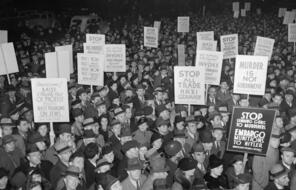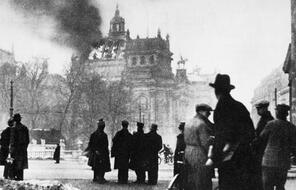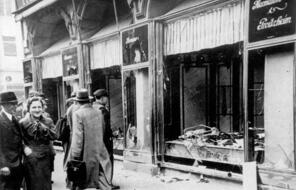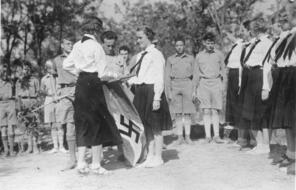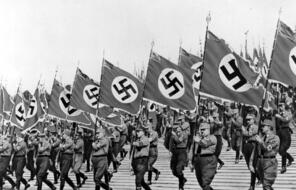Colonising Poland (UK)
Updated
Hitler's Ideology: Race, Land, and Conquest
A Polish woman identified as “Mrs. J. K.” described her expulsion from her home by the Nazis:
On 17 October 1939, at 8 a.m., I heard someone knocking at the door of my flat. As my maid was afraid to open it, I went to the door myself. I found there two German gendarmes [police], who roughly told me that in a few hours I had to be ready to travel with my children and everybody in the house. When I said that I had small children, that my husband was a prisoner of war, and that I could not get ready to travel in so short a time, the gendarmes answered that not only must I be ready but that the flat must be swept, the plates and dishes washed and the keys left in the cupboards, so that the Germans who were to live in my house should have no trouble. In so many words, they further declared that I was entitled to take with me only one suitcase of not more than 50 kilograms in weight and a small handbag with food for a few days.
At 12 noon they came again and ordered us to go out in front of the house. Similar groups of people were standing in front of all the houses. After some hours waiting, military lorries drove up and they packed us in one after the other, shouting at us rudely and also striking us. Then they took us to the railway station, but only in the evening did they pack us into [freight carriages], the doors of which they then bolted and sealed. In these [carriages], most of which were packed with forty people, we spent three days, without any possibility of getting out. I hereby affirm that in my [carriage] there were six children of under ten years of age and two old men, and that we were not given any straw, or any drinking utensils, that we had to satisfy our natural needs in the tightly packed [carriage], and that if there were no deaths in our transport it was only because it was still comparatively warm and we spent only three days on the journey. We were unloaded, half dead at Czestochowa [in the General Government part of Poland,] where the local population gave us immediate help, but the German soldiers who opened the truck exclaimed, “What! Are these Polish swine still alive?” 1
- 1Quoted in Jeremy Noakes and Geoffrey Pridham, eds., Nazism: A History in Documents and Eyewitness Accounts, 1919–1945, vol. 2 (New York: Schocken Books, 1988), 937–38.
Connection Questions
- How were the Nazis’ beliefs about race and their quest for “living space” related?
- How do the individual stories in this reading help you understand the consequences of the Nazi policies in Poland that were based on these beliefs?
- Who benefited from the Nazi plan to rearrange the population of Poland? Who suffered as a result of the plan?
- What insight does this reading provide about the factors that encouraged Germans to support the war effort?
Get the Handout
How to Cite This Reading
Facing History & Ourselves, “Colonising Poland (UK)”, last updated August 2, 2016.



